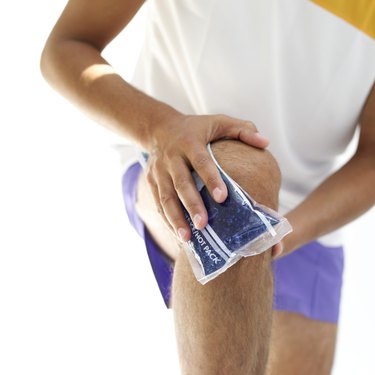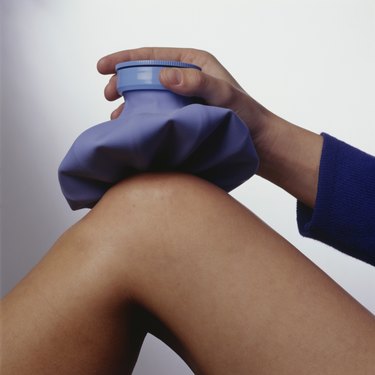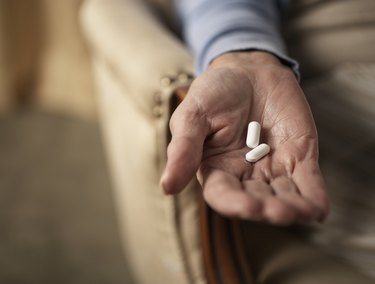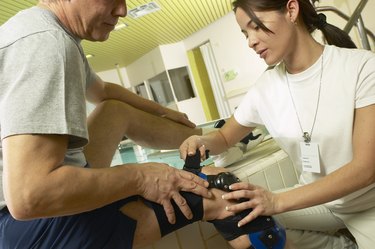
After a long walk, you notice that your knees are aching and very sore. Knee pain after a long period of walking can occur if you walked farther than you have in the past, walked on a hard surface, did not take long and healthy strides or if you wore shoes that provided little to no support. Either way, you're in pain and you want relief. Fortunately, there are several options for helping your pain and to make you feel better. Consult your doctor if pain persists or worsens.
Rest
Video of the Day

You probably already want to crash on the sofa, which is beneficial for your knees. Elevate your knees higher than your hips with pillows or blankets for the rest of the day. Avoid any physical activity that puts pressure on your knees for the next 48 hours, if possible, or until your knees are no longer in pain. Rest is just as important as exercise — it helps your body recover and gives your muscles time to repair.
Video of the Day
Ice and Heat Therapy

During the first 48 to 72 hours after intense exercise, ice packs can help alleviate pain and reduce swelling. Apply ice packs for 15 to 20 minutes three times a day. You can substitute frozen vegetables or meat for ice packs. After the third day, you can switch to heat therapy, use a heat pack, warm baths or a warm washcloth, bigkneepain.com suggests. Apply heat for 10 to 15 minutes and wait for an hour between sessions. Avoid using heat if there is still swelling around your knee, because heat will increase inflammation of the joint.
Compression

Compression therapy helps relieve pain and swelling. You can use an elastic bandage for this purpose. Wrap it around your knee, but do not wrap it too tight. If your affected knee becomes colder than your other knee, you have the bandage too tight. Remove the wrap before showering or sleeping.
Medication

Take non-steroidal anti-inflammatory medications to relieve the pain. These medications should contain ibuprofen, acetaminophen, naproxen sodium and aspirin. Read the label on any over-the-counter medications before taking them.
Medical Help

If home care does not alleviate your knee pain, you could have torn or strained a ligament in your knee. If your symptoms persist or get worse after a few days, make an appointment with your doctor. Seek immediate medical attention if you have intense pain, sudden swelling, lose function of your knee or notice a joint deformity.
Is this an emergency? If you are experiencing serious medical symptoms, please see the National Library of Medicine’s list of signs you need emergency medical attention or call 911.